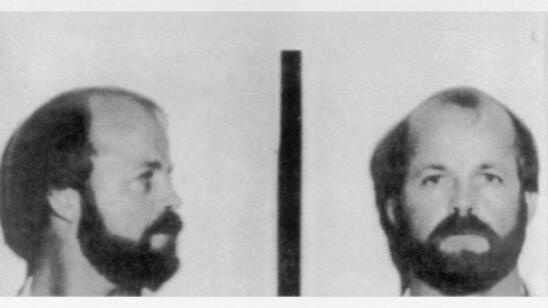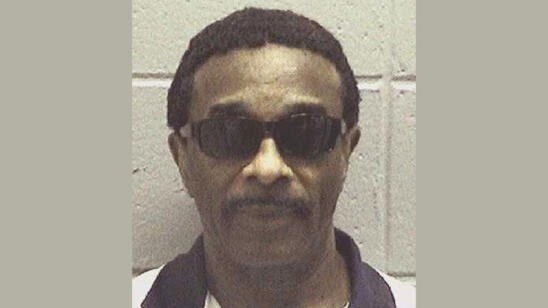For 33 years, New York City police detectives ignored Pedro Hernandez. Despite his name being in their reports as someone who worked in the area where 6-year-old Etan Katz had vanished in 1979, they never contacted him or interviewed him.
The husband and father did not become a person of interest in one of the most memorable unsolved murders in Manhattan’s history until 2012, when a suspicious relative called the police.
Hernandez’s brother-in-law, seeing reports of an investigation into another man for the crime, called police with a tip: Hernandez had spoken over the years about killing a boy in New York City. But no one from his family, his prayer group or his coworkers took him seriously.
During about seven hours of questioning, Hernandez told detectives what they wanted to hear.
While working as an 18-year-old stock clerk at a bodega at West Broadway and Prince Street, not far from Etan’s bus stop, he lured the boy inside for a soda. Hernandez told detectives he attacked Etan in the basement, where “something took over me.”
“I grabbed him by the neck, and I started to choke him,” Hernandez told the investigators. Hernandez said Etan was still alive when he stuffed him into a plastic bag that he shoved inside a box and discarded a block away.
No one ever saw Etan again. His body was never found.
Soon after the confession, police announced the 51-year-old Hernandez’s arrest, bringing relief to Etan’s family and a Lower Manhattan neighborhood once gripped with fear following the boy’s disappearance.
Etan Headed Out Alone
It was May 25, 1979, a Friday heading into Memorial Day weekend. Etan asked his mother, Julie, if he could walk to the bus himself. It was only a couple of blocks away in their SoHo neighborhood. So, for the first time, she allowed her independent son to head out alone. “It’s fine, mom,” he told her.
Carrying a school bag decorated with elephants, and a dollar to buy a soda on the way, Etan took off. He never made it to the bus or school.
Police swarmed their neighborhood that afternoon with bloodhounds. Flyers with the 3-foot-4-inch blond-haired, blue-eyed boy’s face hit shop windows. Frightened parents kept their children close.
Four years later, without a trace of the boy and no suspects arrested, President Ronald Reagan declared May 25 the first National Missing Children’s Day. Etan’s disappearance helped establish the National Center for Missing & Exploited Children. Missing children’s faces began appearing on milk cartons.
Focus on a Convicted Child Molester
For many years, police keyed on one suspect, Jose Ramos, a convicted child molester in a relationship with a woman hired to walk Etan home from school.
Ramos denied involvement but acknowledged that he encountered a boy that could have been Etan in a park the same day Etan vanished.
“Ramos had a propensity for kids that look just like Etan and sexually abused them,” Hernandez’s attorney, Harvey Fishbein, tells A&E True Crime. “He was clearly a primary suspect.”
Believing Ramos was their guy, detectives focused on him for years. But the investigation went nowhere.
Search for a Body Continues
In 2012, police tore up a handyman’s basement on Prince Street. Othniel Miller, who denied involvement in Etan’s case, acknowledged he knew Etan. Miller, detectives discovered, had poured a concrete floor after Etan disappeared.
News media surrounded the building as jackhammers turned the floor into rubble. Detectives found nothing but animal bones.
News Coverage Leads to Breaks
News coverage of the dig, however, triggered results. New Jersey resident Jose Lopez called detectives with suspicions about Hernandez. Shortly after Etan disappeared, Lopez told them, Hernandez said he had killed a child. Hernandez told the same story to his church group, his wife and a childhood friend.
Even before police turned on their video camera and read Hernandez his Miranda rights during questioning, Hernandez confessed.
“I never meant to hurt their child,” Hernandez told them. “I hope they can forgive me.”
Based on Hernandez’s confession and other statements to people he knew, prosecutors took the case to trial without a body, forensic evidence or even a motive. A first trial ended with jurors deadlocked 11-1 in favor of guilt. A second trial concluded in 2017 resulted in a second-degree murder conviction.
At that trial, Etan’s father, Stanley Patz, angrily addressed Hernandez.
“After all these years, we finally know what dark secret you kept locked in your heart,” Patz said. “You took our precious child and threw him in the garbage. I will never forgive you. The god you pray to will never forgive you. You are the monster in your nightmares and will join your father in hell.”
He also said “it’s about time” that Hernandez was convicted.
A judge sentenced Hernandez to 25 years to life in prison. His attorneys appealed, but a New York appellate court ruled the verdict was “based on legally sufficient evidence” and Hernandez’s confession was “reliable and truthful.”
Attorney Claims Pedro Hernandez Is Innocent
Hernandez’s attorney, Fishbein, believes an injustice occurred.
“We certainly don’t have a video of Pedro’s life, but nothing points to him having done this, other than his own words,” Fishbein says. “His own words were totally unreliable.”
Fishbein argues today, as he did at trial, that Hernandez suffered from schizotypal personality disorder, a condition like schizophrenia that made him “weird, quirky, different, aloof.” He took anti-psychotic medication. His IQ was about 70.
Fishbein says Hernandez somehow developed a “fixated picture in his mind” about the killing, and through the hours of questioning, admitted to something he did not do. He had no previous criminal background. Focus on Ramos, he told the jury, trying to destroy Hernandez’s credibility.
“Clearly he was wrongfully convicted, because I don’t believe the evidence was there,” Fishbein says. “I also believe that he’s an innocent man.”
Hernandez’s legal team contended police violated his Constitutional rights to self-incrimination.
After a New York state appellate court upheld the conviction, a federal appeal, mostly based on Constitutional claims, failed in 2024 in U.S. District Court. Attorneys have appealed to the U.S. Court of Appeals, 2nd Circuit.
Fishbein says he speaks to Hernandez regularly, but he will not discuss his private talks. New York prison records show Hernandez is currently serving his sentence at the Elmira Correctional Facility in Elmira, New York. He will be eligible for parole in 2037.
“There’s a million issues here,” Fishbein says. “When someone confesses to something, jurors have a very hard time believing that they didn’t do it. Why would someone confess? Well, you try to show them the psychiatric situation and that they had these fantasies and beliefs that it could be implanted. But for whatever reason, the jury convicted….
“This was a very, very emotional case here in New York.”
Related Features:
What Drives Some People to Kidnap Children?
How Were Amber Alerts Created? The Amber Hagerman Cold Case
The Paperboy Abduction Cases: The Legacy of Two Des Moines Boys Who Are Still Missing


